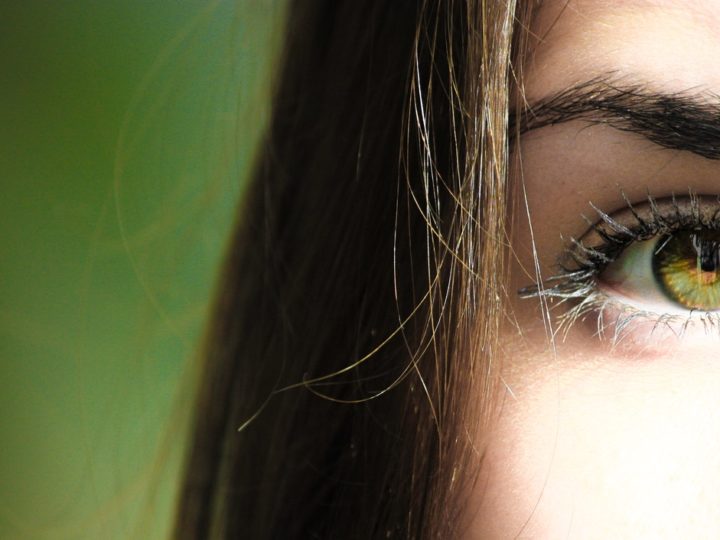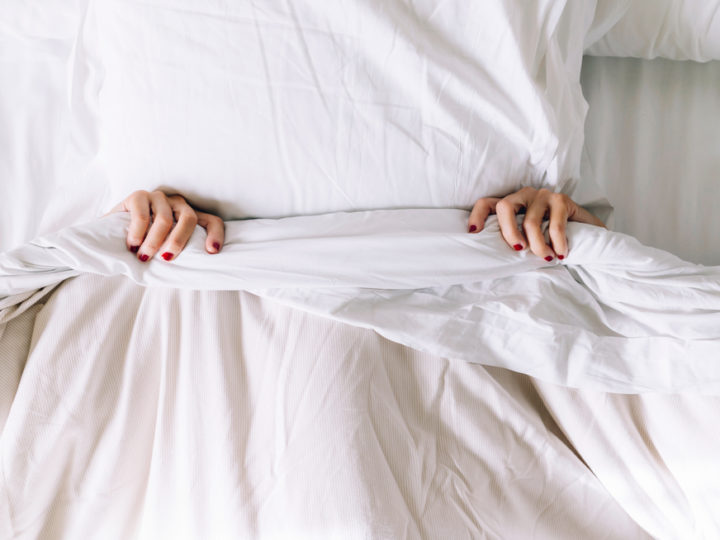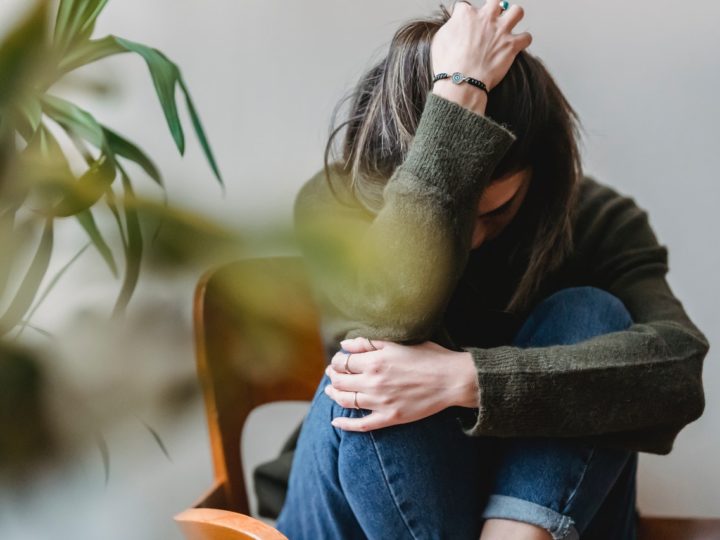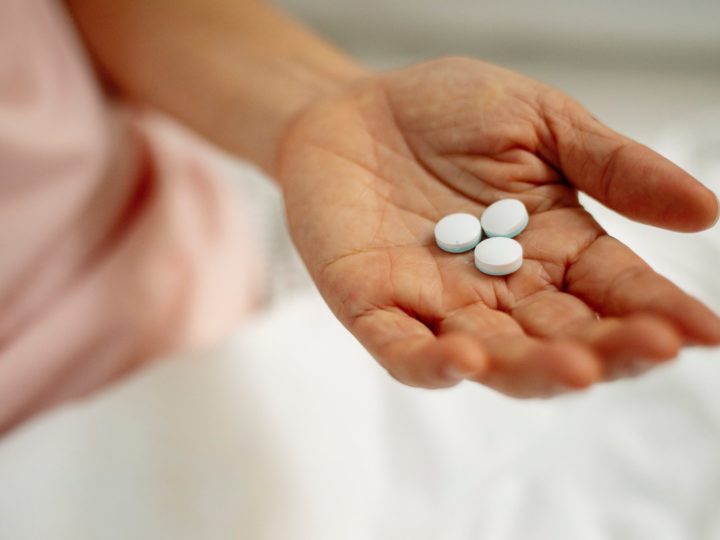DRY BRUSHING: WHAT’S THE DEAL WITH THIS VIRAL BEAUTY TREND?
The Old-Made-New Beauty Ritual You Need to Know
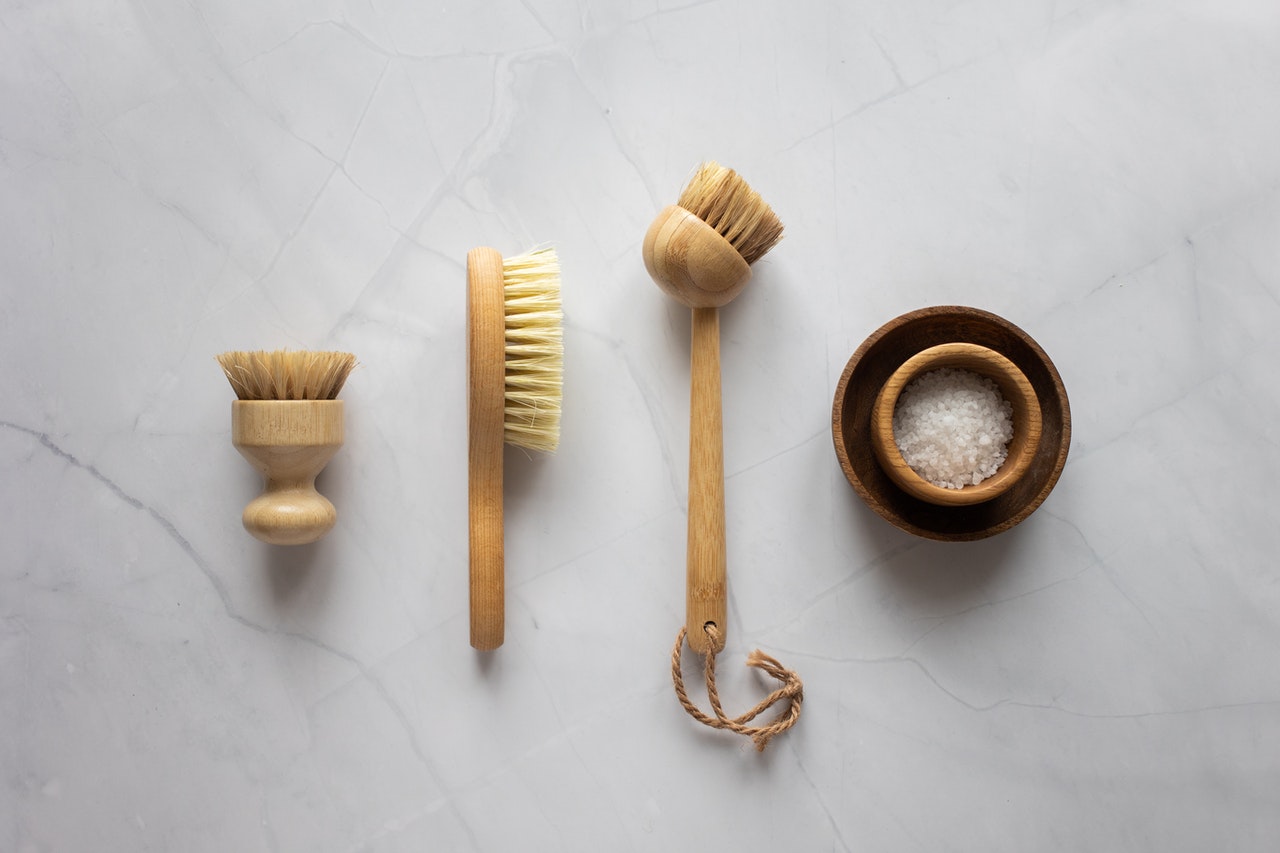
A-listers from Miranda Kerr to Chrissy Teigan are all doing it. But what the heck is dry brushing, exactly?
Well, believe it or not, this viral beauty trend is actually pretty old. In fact, we’re talking ancient. It comes from the Ayurvedic practice called garshana and it’s been practiced by people for thousands of years. Here’s what you need to know about this old-made-new beauty ritual.
Dry Brushing 101: Everything You Need To Know
What is Dry Brushing?
Dry brushing is pretty self explanatory. Basically, you take a body brush with natural bristles or gloves made of raw linen or silk and brush your entire body in upward strokes. Both your skin and your brush should be dry throughout the process.
Where Does Dry Brushing Come From?
Even though dry brushing has become trendy recently, it’s actually an ancient practice from one of the oldest holistic medicine traditions in the world, Ayurveda.
In Ayurvedic practice, dry brushing is called garshana. It’s used to exfoliate dead skin (called ama) and help encourage lymphatic drainage and circulation. Traditionally done with gloves, many people use natural bristle brushes these days because the long handles make it easier to brush hard to reach places like the back.
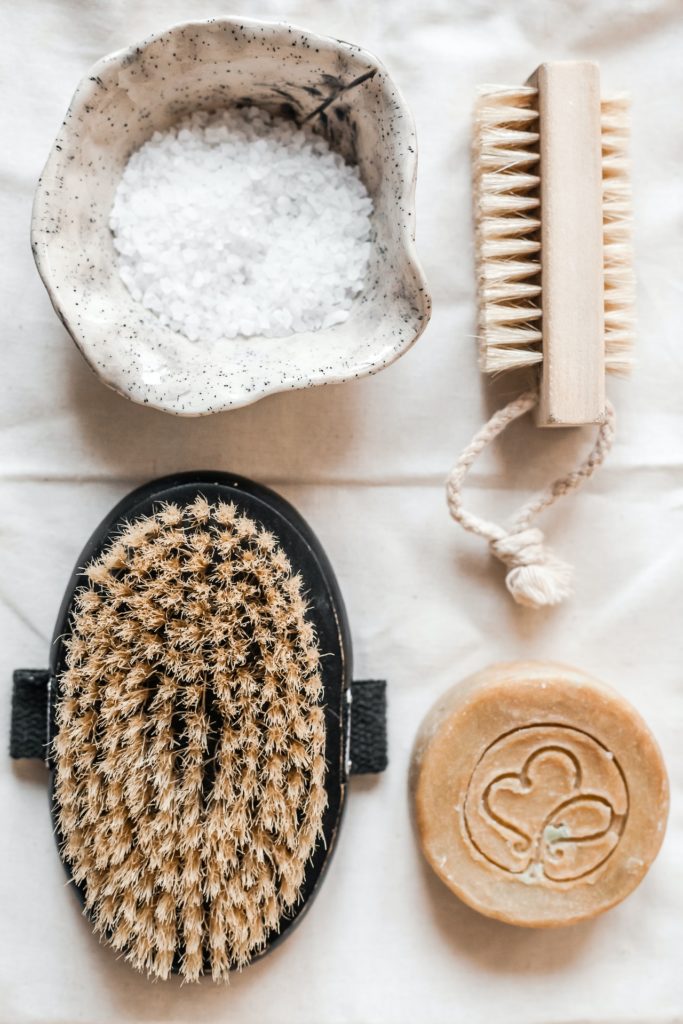 Supposedly, dry brushing helps people who have too much ama–basically a dead waste product that your body can’t use or get rid of. People who struggle with fatigue, mental clarity, poor immunity, and constipation might be dealing with too much ama and can benefit from dry brushing, according to Ayurveda.
Supposedly, dry brushing helps people who have too much ama–basically a dead waste product that your body can’t use or get rid of. People who struggle with fatigue, mental clarity, poor immunity, and constipation might be dealing with too much ama and can benefit from dry brushing, according to Ayurveda.
For people with lots of kapha (a combo of earth and water) energy or pitta (fire and water) dosha, it’s recommended to dry brush 5-7 days a week. People with vata (air and space) dosha should still do it 2-3 times a week. And if you have dry skin, you should always make sure to use warm oil after dry brushing to rehydrate your skin.
The Benefits of Dry Brushing
There’s not much scientific research to back up the claims of dry brushing. But the fact that it’s been practiced for centuries tells us that it does something. Here’s what fans of dry brushing say the practice helps with.
Exfoliate and Circulate
After you dry brush, your skin might look a little pink or red. That’s not because it’s irritated. It’s because dry brushing helps boost circulation to the areas you’ve brushed. It also sloughs off all the dead skin cells that can make your skin look patchy or rough. That’s why it’s perfect before a spray tan or just when you want silky smooth skin.
De-Puff
If you’ve heard of gua sha, you know why lymphatic drainage is a big deal when it comes to skin care. Lymph fluid circulates throughout our blood. It can hold toxins and make our skin look puffy. But dry brushing and gua sha can both help to boost blood flow and drain that pesky fluid.
Bye Bye Celulite
Like other kinds of massage, dry brushing can help make cellulite less noticeable because it makes the skin look more plump after the treatment. It won’t banash your cellulite, (you need to get deeper into the fascia for that) but it will temporarily diminish the appearance of it.
How To Dry Brush
Ready to brush your way to better circulation and smooth skin? Here’s how.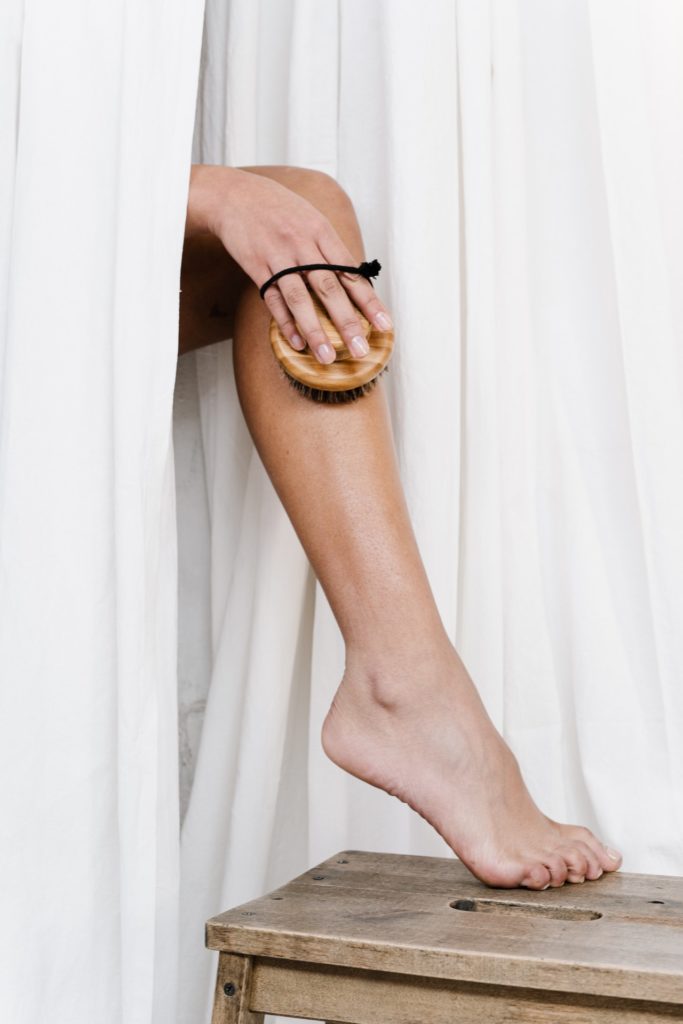
- Grab your dry brush. A long handle, though not required, is helpful for reaching behind your back. It’s best to find a brush with natural bristles.
- Make sure your skin and the brush are both dry.
- Start brushing at your feet in upward circular strokes. Make sure to go in a clockwise direction.
- After you work your way up your legs and torso, brush your arms starting at your hands and moving towards your armpits.
- In sensitive areas, like your bikini line or armpits, use light pressure. For tougher areas like feet or knees, you can press a little harder.
- Once you’re done brushing, hop in a cool shower and bathe as normal. This helps to get rid of any last trace of dead skin or dirt you picked up while brushing.
- If your skin feels dry after the shower, apply warm body oil to add back some moisture.
When you’re done dry brushing, rinse your brush with warm water to get rid of any trapped skin cells. Then let it dry in a warm sunny spot so it doesn’t grow any mold. Once a week, you can do a more thorough cleaning with soap and water.
Remember not to brush areas that are inflamed or have open wounds, including psoriasis outbreaks, rashes, and cuts. And skip your face, as dry brushing is generally too harsh for that.
So what do you think? Will you try dry brushing?
Newer
More Than Meets The Eye: How To Take Care of Your Eyes With Eastern Medicine
Older
Post-COVID Revenge Glam, TCM Style
Comments (0)
Leave a reply
You must be logged in to post a comment.

